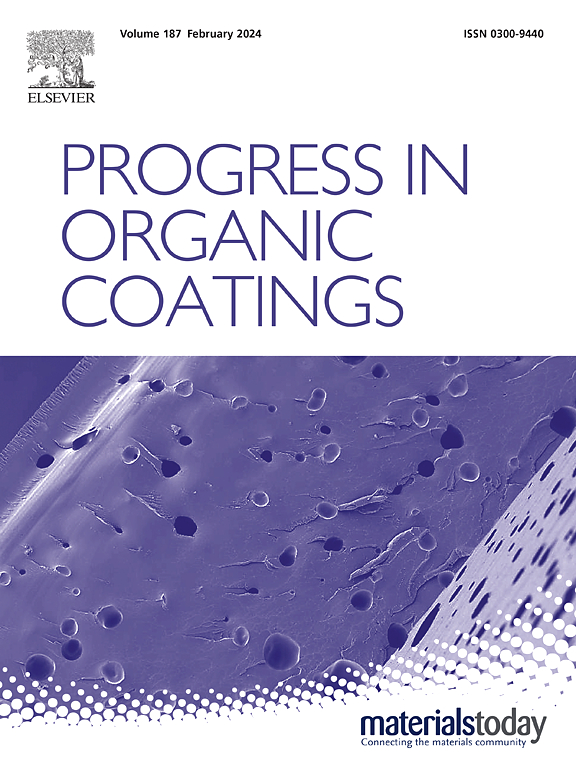Uniform electrodeposition of graphene/polypyrrole conductive coatings promoted by graphene quantum dots
IF 6.5
2区 材料科学
Q1 CHEMISTRY, APPLIED
引用次数: 0
Abstract
Electrodeposition of graphene reinforced polypyrrole (PPY) conductive coatings was challenging because the surface of graphene was chemically inert, leading to phase separation between graphene and PPY. Phytic acid (PA) was grafted on the surface of graphene by a two-step functionalization to enhance the dispersion stability of the electrodeposition electrolyte, as well as the interactions between functionalized graphene (PG) and PPY. The multiple phosphonic acid groups on PA molecules can dope the PPY molecules during its electro-polymerization. Graphene quantum dots (GQDs) interacted with pyrrole and PG though π-π interaction, providing negative charges, which facilitated the directional movement of PG under the electric field force, therefore, promoted the uniform film-formation of the composite coatings. As a result, the composite coatings showed the electrical conductivity of 175 S cm−1,interfacial contact resistance of 8.37 mΩ cm2, corrosion current density of 0.84 μA cm−2 (by potentiodynamic polarization) and 0.95 μA cm−2 (by potentiostatic polarization), satisfying the comprehensive properties requirements for bipolar plates, benefited from the high doping level and crystallinity of PPY, the balanced functionality and electrical conductivity of PG and the promotion of film-formation by GQDs.
求助全文
约1分钟内获得全文
求助全文
来源期刊

Progress in Organic Coatings
工程技术-材料科学:膜
CiteScore
11.40
自引率
15.20%
发文量
577
审稿时长
48 days
期刊介绍:
The aim of this international journal is to analyse and publicise the progress and current state of knowledge in the field of organic coatings and related materials. The Editors and the Editorial Board members will solicit both review and research papers from academic and industrial scientists who are actively engaged in research and development or, in the case of review papers, have extensive experience in the subject to be reviewed. Unsolicited manuscripts will be accepted if they meet the journal''s requirements. The journal publishes papers dealing with such subjects as:
• Chemical, physical and technological properties of organic coatings and related materials
• Problems and methods of preparation, manufacture and application of these materials
• Performance, testing and analysis.
 求助内容:
求助内容: 应助结果提醒方式:
应助结果提醒方式:


